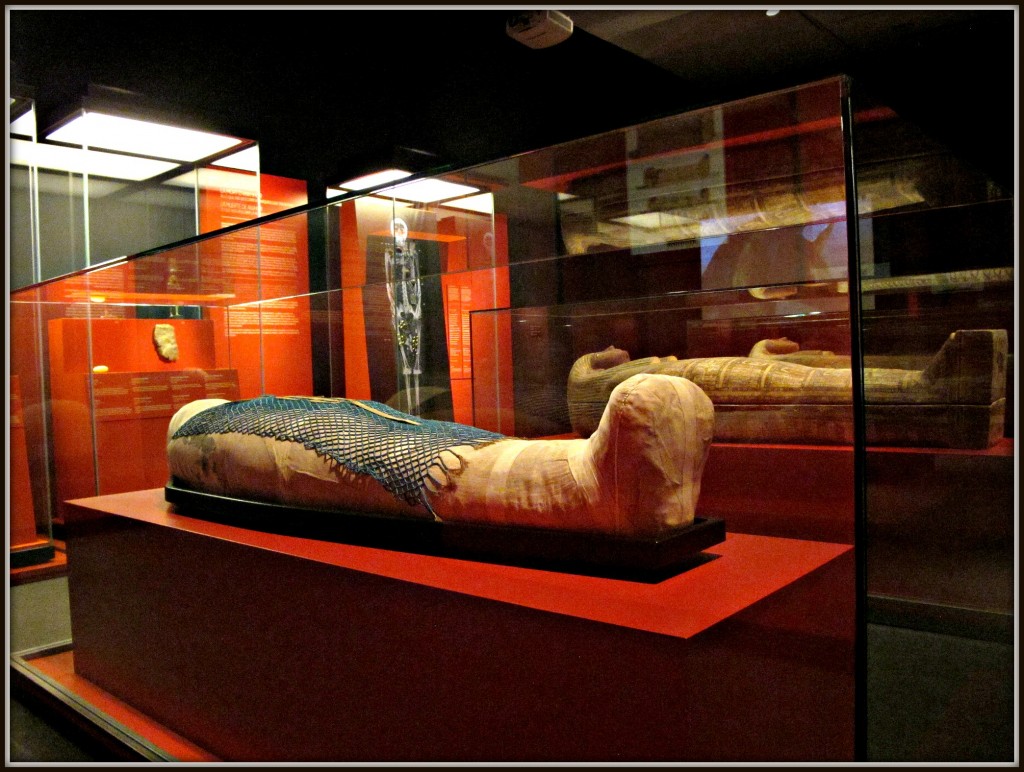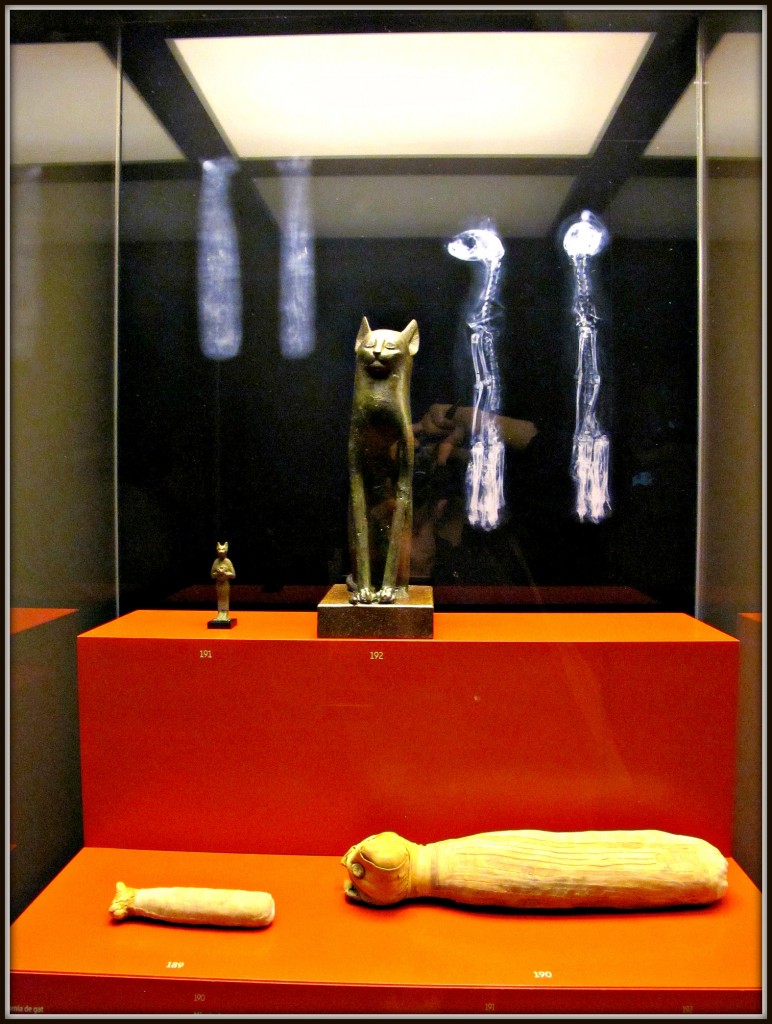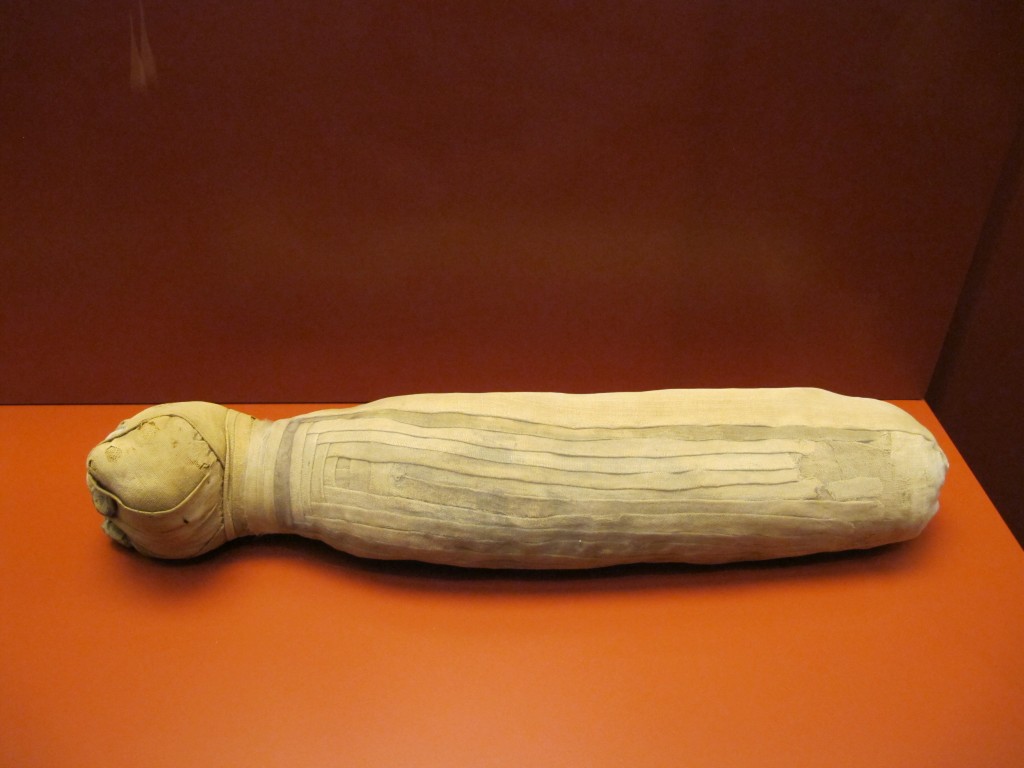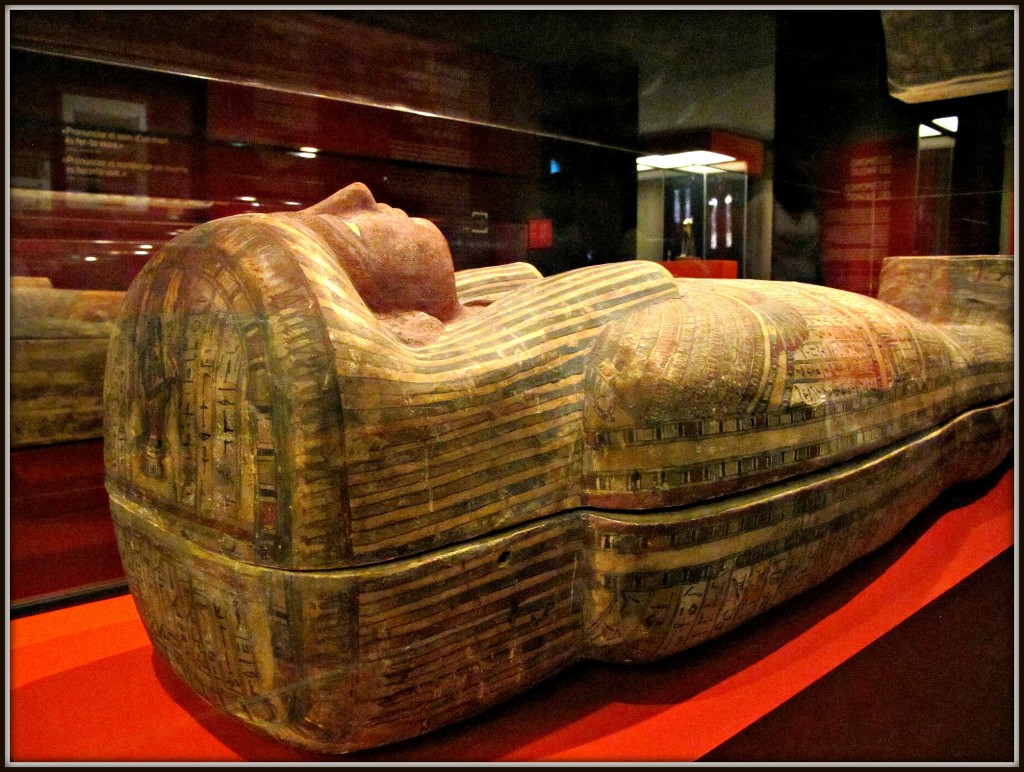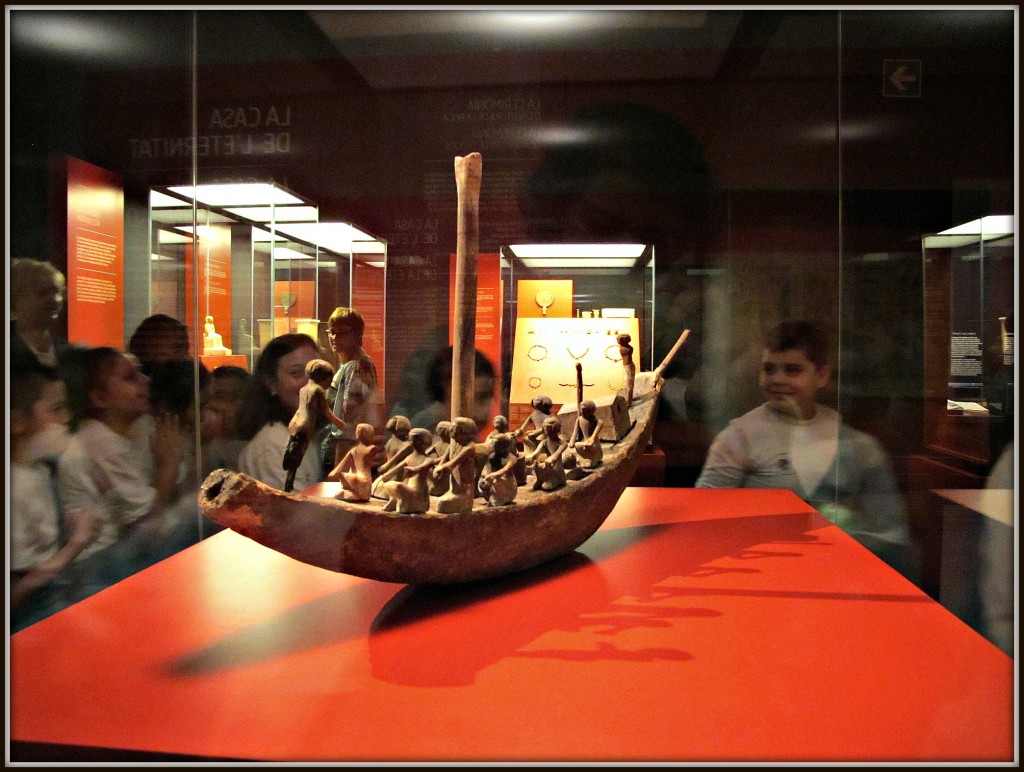“Uttering a dead person’s name is bringing him back to life” wrote Ankhhor, priest and scribe from Thebes, Egypt. He wouldn’t have imagined though, back in 650 B.C., that his death and his remains would be investigated centuries later in order to bring light to the Ancient Egypt mystery. Now, they’ve even become the line of reasoning of the exhibition Mòmies egípcies. El secret de la vida eterna (Egyptian mummies. The secret of eternal life), which will be on until August 18 at the ‘CaixaForum Tarragona’.
Ankhhor brings then the ‘CaixaForum’ back to life through an interesting proposal that exhibits the treasures of the Rijksmuseum van Oudheden (National Museum of Antiquities) of Leiden, in the Netherlands, and that will provide answers to one of the most spread, and at the same time, most fascinating aspects of the Egyptian civilisation: mummies.
Anna Catà, from the ‘Auriga Serveis Culturals’, claims the exhibition generates interest especially because it revolves around the idea of eternal life; a concept wealthy families were very bound to; that is, those who could afford the actual mummifying process, the creation of charms that would serve as company throughout their future eternal life, or the jewels and sarcophagi –the wealthier, the more objects–, that would allow for a better life after death.
For the Egyptians, death was the way to a new life. Before that though, it was necessary to initiate a transformation process that would imply the entrails extraction –apart from the heart–, as the previous step to their own preservation in salt, for about forty days, to ensure a successful mummification procedure, something that would require up to forty kilometres of bandage in the past. Everything is shown in high detail, using in some cases, several tools from that time.
There is also a dedicated area for mummies in the CaixaForum, would anyone be passionate about them. Although one should bare something in mind: the Mummy of Ankhhor has not gone through any invasive technique, and therefore, it has never been unwrapped. This has allowed the mummy, as explained by Anna Catà, to become a very important data source, thanks to the use of techniques such as the scanner or the CAT. In fact, the last part of the exhibition reveals that Ankhhor was 160 cm tall, between 32 and 50 years old when he died, and that his teeth were in very good condition, a not very common sign among his contemporaries of the Ancient Egypt.
The fascinating trip throughout the history of this civilisation also includes the finding of papyri –some of them of unique characteristics due to the information these contain–; jewels, Canopic jars –where the corpse’s internal organs were kept– and other grave goods such as charms, servants –who were considered as figures rather than sacrificed humans–, or sarcophagi, built to accompany Ankhhor in this new life, without forgetting the peculiar mummy of a cat.
The exhibition has yet another precious gift for visitors aiming for unique objects: the handwritten notebook used by the historian Jean-François Champollion (1790-1832), French philologist and Egyptologist to whom first steps for complicated Egyptian hieroglyphs to be deciphered are attributed. The fact that Champollion was able to understand Egyptian symbols has not to do with coincidence, but with his early dedication to the Ancient Egypt, from the age of sixteen, which turned him, in his own words, into an ‘Egypt-freak’. ‘Egypt is everything to me’, he used to say. If someone actually shares this passion (or part of it) with Champollion, do bear in mind that ‘Mòmies egípcies. El secret de la vida eterna’ is a free exhibition that can be enjoyed as many times as you wish.
Mòmies Egípcies. El secret de la vida eterna
CaixaForum Tarragona
Cristòfor Colom, 2
43201 Tarragona
Timetable
Monday to Friday, 9am-2pm and 5pm-8pm
Saturday and holidays, 11am-2pm and 5pm-8pm
Tours for general public
Catalan: Saturday and Sunday, 7pm
Spanish: Sunday, 8pm
English and Fresh: available prior reservation
Price: 3€ per person; 1,5€ for La Caixa clients.
* Reservation is recommended: (0034) 977 249 871
Group tours: appointment is mandatory (0034) 977 249 871
Price: 60€ per group (25 people maximum)
Text: Gemma Casalé (@casalesi)
Translated by: Artur Santos (@artur_1983)
Photos: Gemma Casalé


